Lake Resia, in northern Italy, is a local curiosity and a submarine diving site where you can see the church’s bell tower above the surface of the water.
If there is a place in Italy which seems abandoned by man, it is surely the lake of Resia.
Indeed, in the north of Italy, in the region of Trentin-Haut-Adige, near the borders of Austria and Switzerland, more than 100 km from the vile of Bolzano , Lake Resia is today a geographical curiosity not to be missed. This lake with a capacity of 120 million cubic meters of water is surely the largest lake in the region but its originality is that it has engulfed a whole village whose only bell tower emerges from the streams.
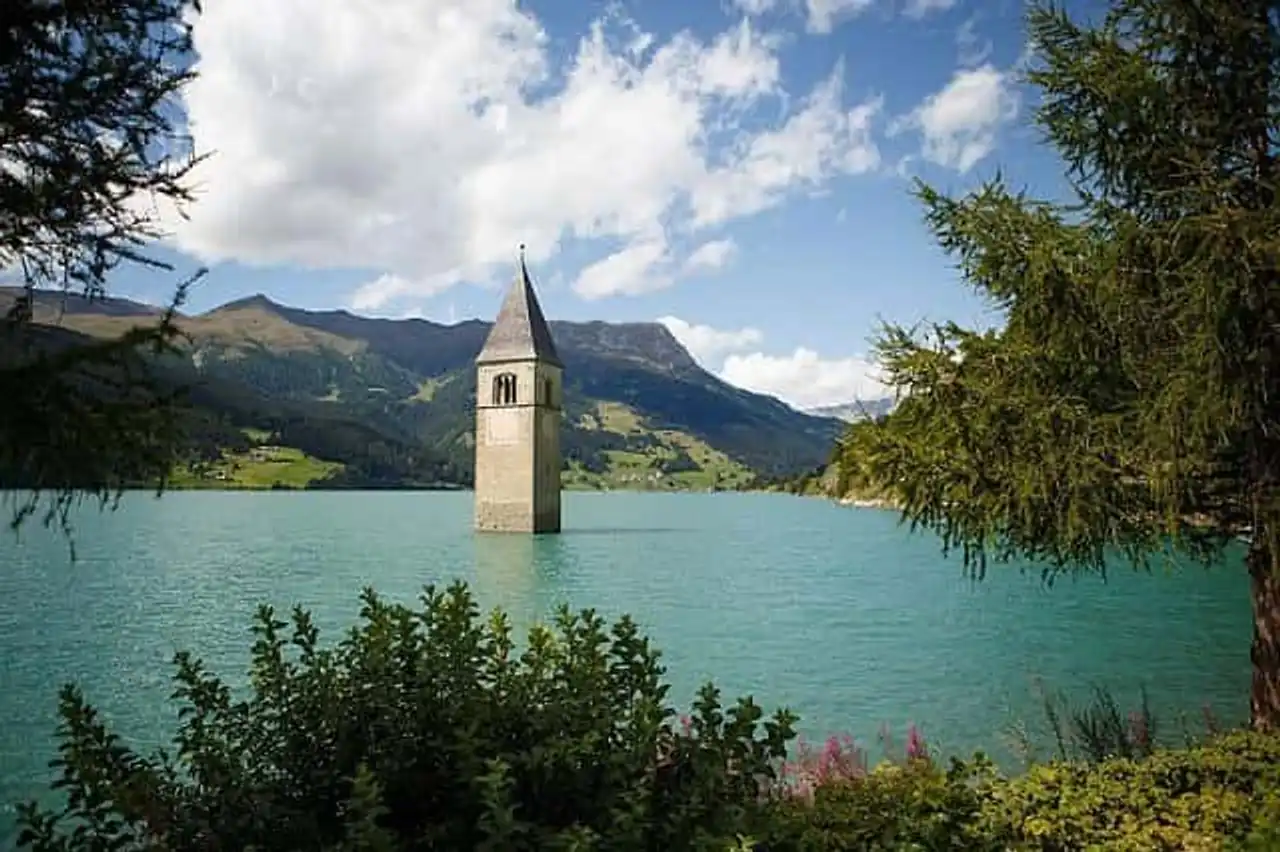
Photo credit: Wikimedia – Sander van der Wel
The village of Graun
In this place existed until half of the 20th century a village resonating in the name of Graun. Before a hydraulic dam was established in July 1950, two small lakes were juxtaposed. but during the rise of the waters to gather the two lakes in question, the village of Graun was completely engulfed.
Of course, the inhabitants had been warned: everyone had taken to a truck the maximum of his business and had prepared to evacuate the place to be relocated elsewhere.
A city engulfed
In July 1950, the water was destroyed and the water engulfed the whole village: 170 houses, 120 farms, schools, barns, everything was quickly under the water.
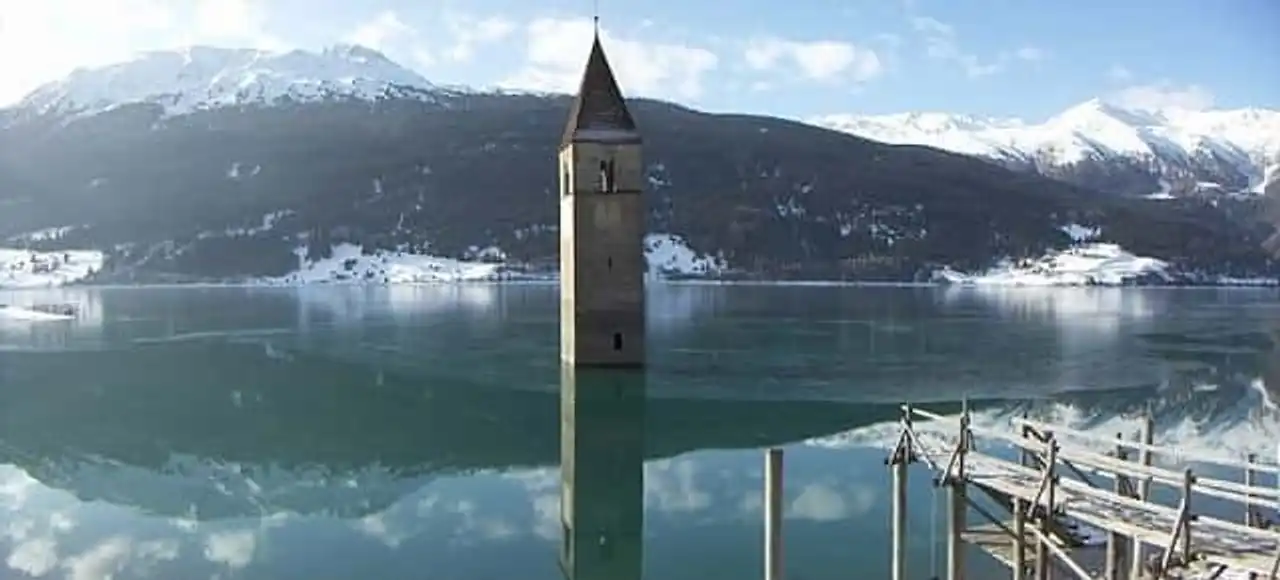
Photo credit: Wikimedia – Llorenzi
On the last Sunday of July 1950, the bells sounded for the last time as if they were to say goodbye to the parishioners. The bells were then removed and then decided to blow up the church but it did not collapse, it resisted.
Dating from 1357, the bell tower was 650 years old at the time. Today, the bell tower still resists as it is the only building that can be seen on the surface of the Resia Lake.
Today, the Resia Lake is 6 km long, millions of cubic metres, a local curiosity but also a site that has become known for scuba diving. While in summer you can take a boat ride around the building in winter, it is possible to walk on the ice.
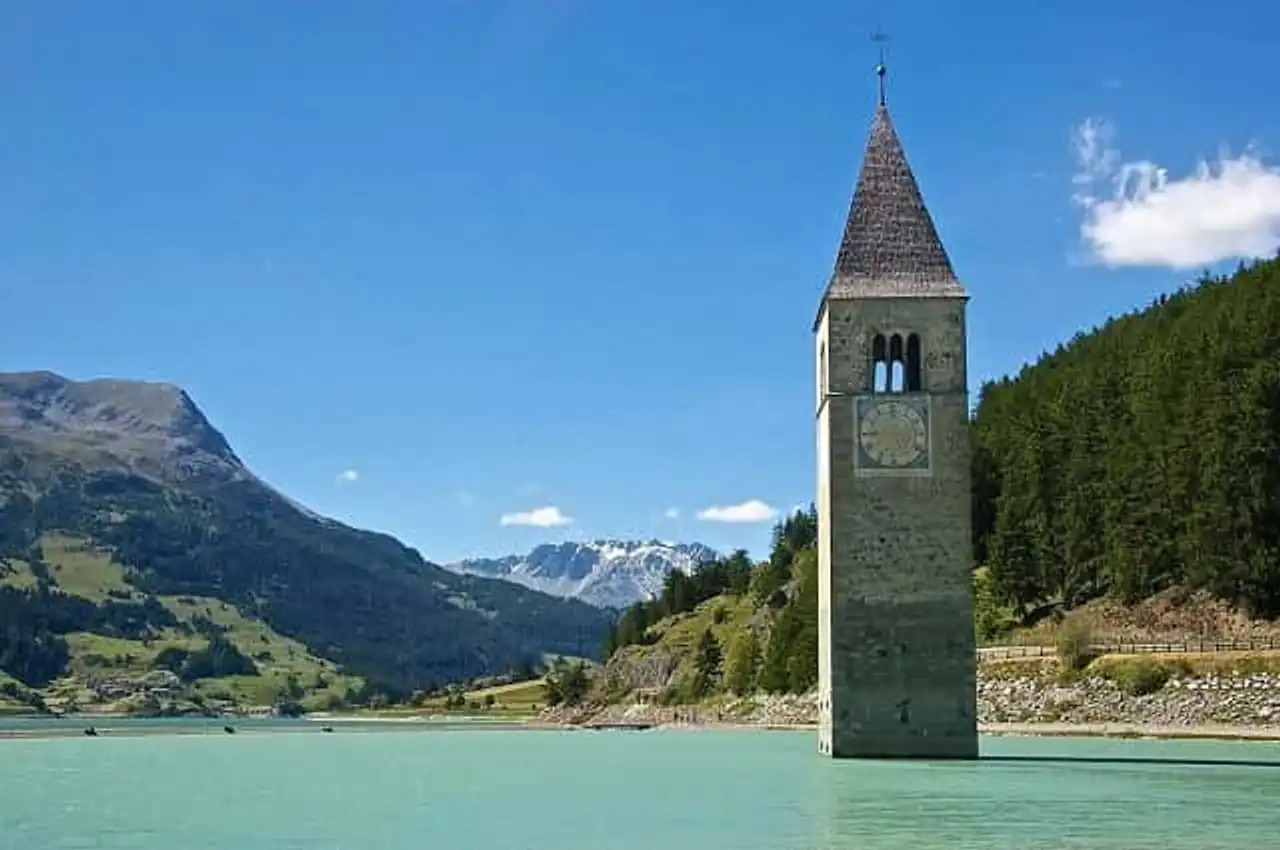
Photo credit: Flickr – John Mason
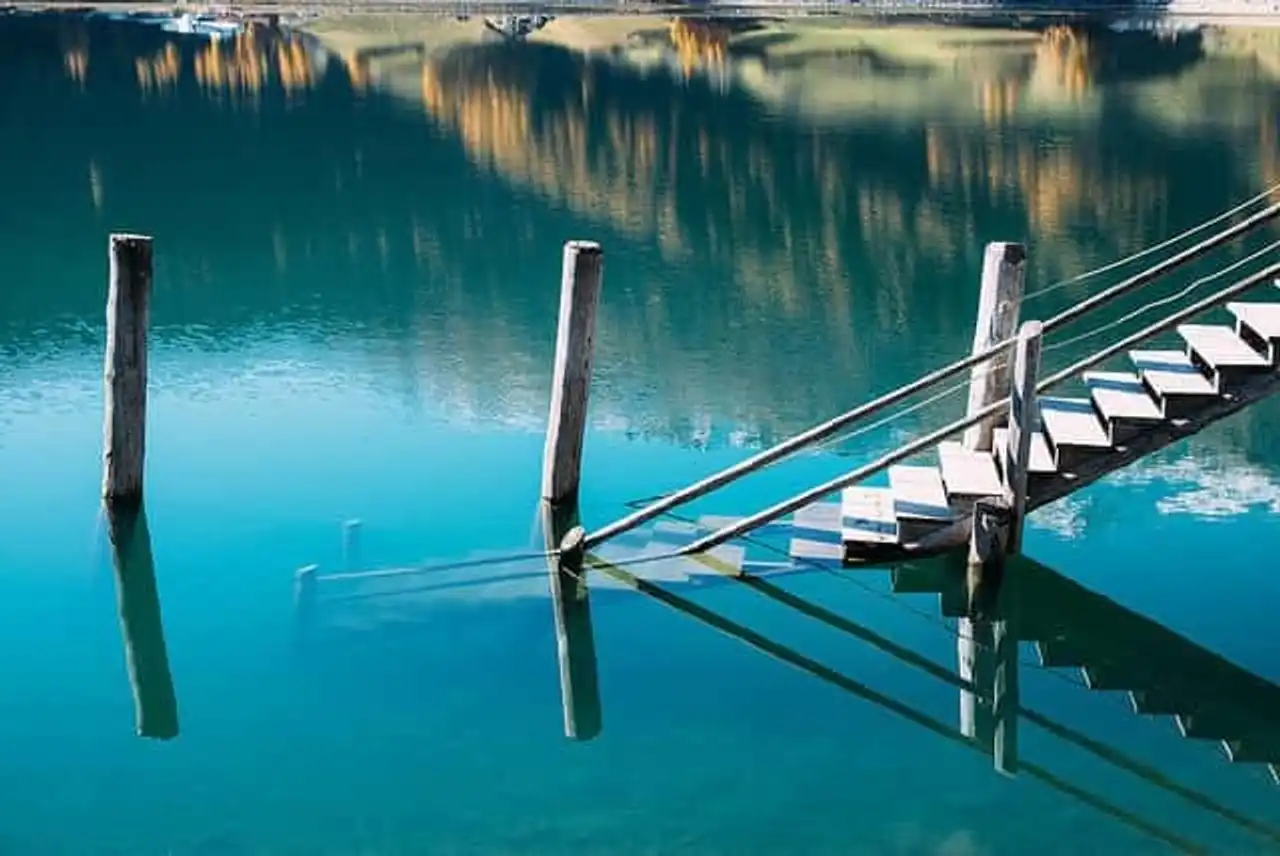
Photo credit: Flickr – Marco
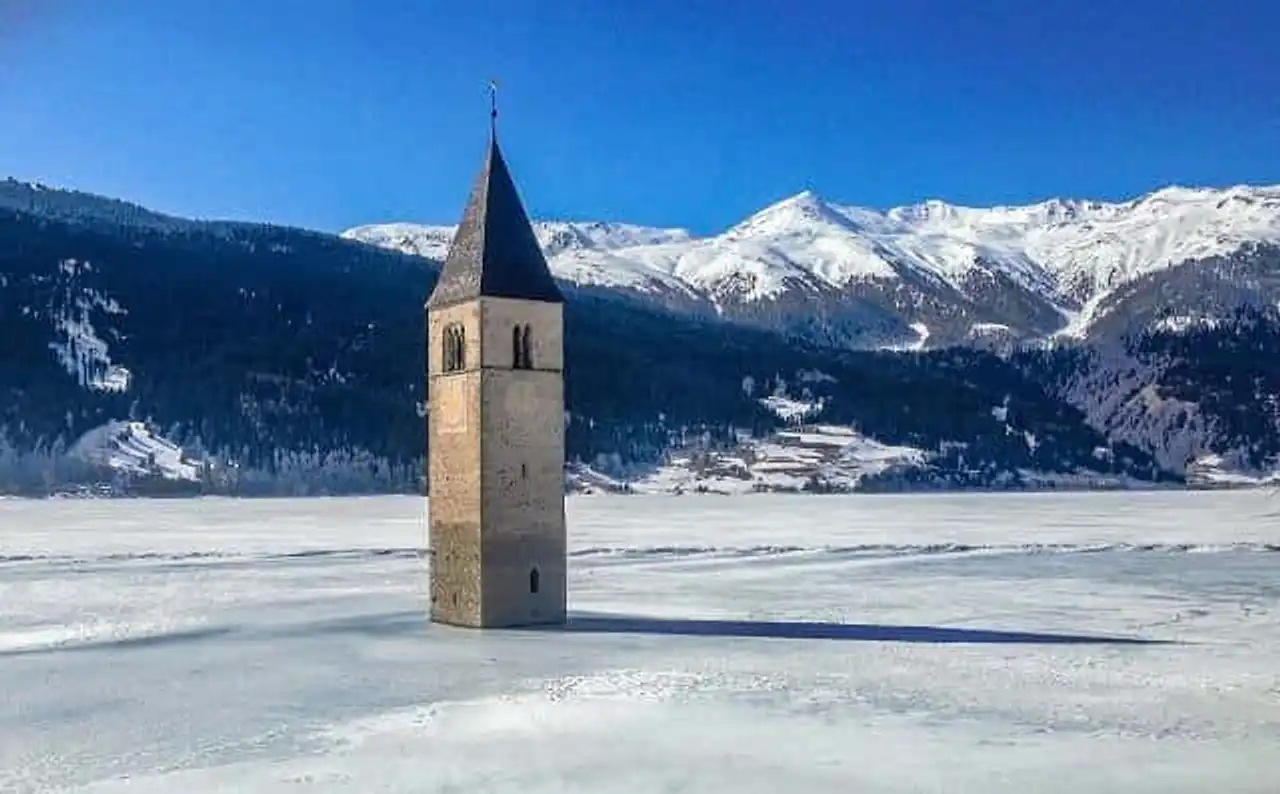
Photo credit: Pyxabay – olafhunck
Main photo credit: Flickr – Jonas Löwgren
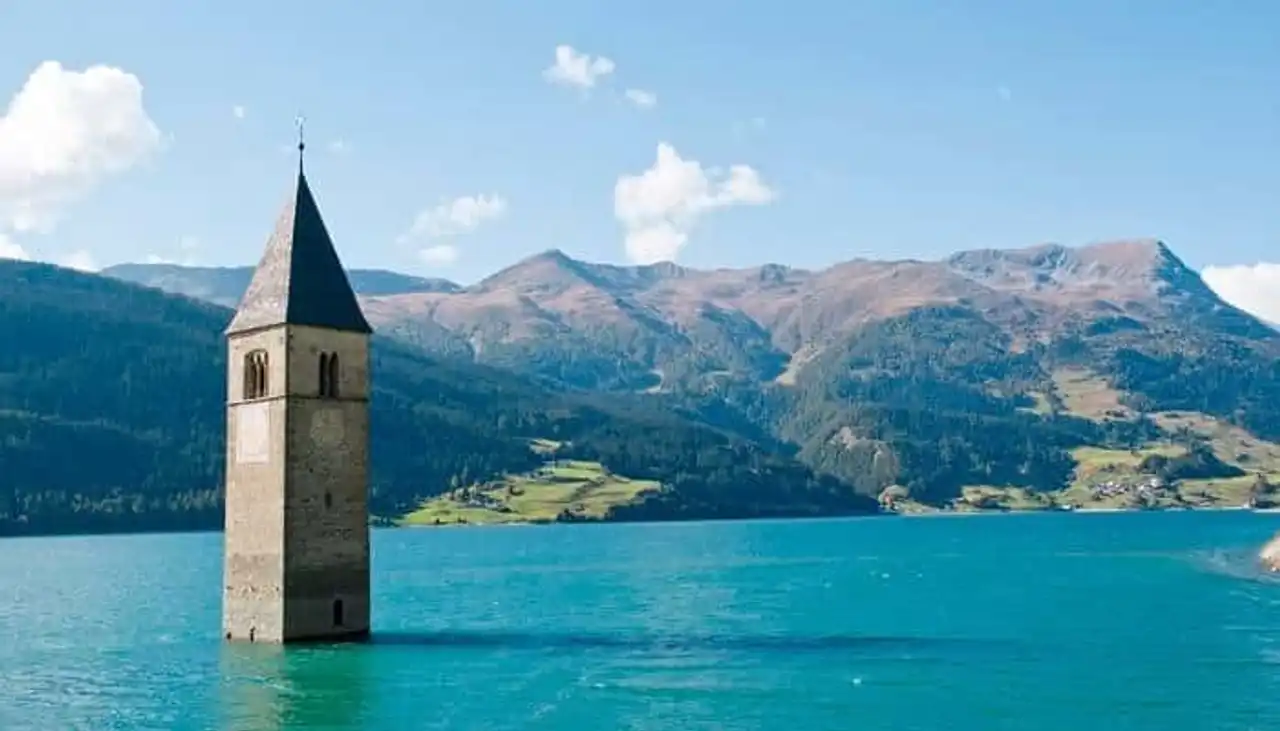







Loading comments ...